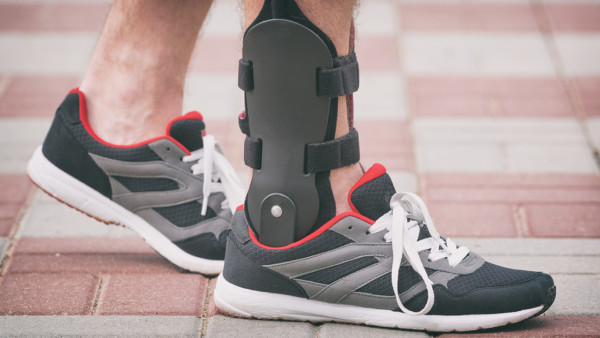Grade 3 Ankle Ligament Sprain: Surgery vs. Bracing

Monika Wisniewska/Shutterstock
Many times in the United States, high grade ankle ligament tears (grade 3) are surgically repaired. This is despite their being a paucity of evidence that this is the best course of action for high grade ankle ligament sprains. A recent study of randomly assigned grade 3 ankle ligament sprain patients looked at this issue. In the study, there was a surgically treated group and one that used an ankle brace. Both groups of grade 3 ankle sprain patients got back to activity about the same. The advantage of the surgical group was less recurrance of re-injury of the ankle ligaments. The big disadvantage for the surgically treated ankles, more ankle arthritis. Why would surgery of the ankle ligaments cause more arthritis down the road? The answer may be in another study showing that lateral ankle ligament surgery and repair actually lead to abnormal motion of the foot and ankle. When a joint moves abnormally, we frequently see more arthritis, as parts of the joint can become worn out more quickly. For the ankle, this may be caused by the fact that restoring normal ankle ligament tension and position may be very difficult to nearly impossible. In our clinic, we often see patients after ankle ligament surgeries that are left with ligaments that are too tight. These artificially tightened ligaments can cause abnormal motion in the ankle. As a result, we frequently council our patients to avoid ankle ligament reconstruction surgery. Non-surgical methods of repair (like injecting the patient’s own stem cells into the ankle ligament tear), in our experience, are often more effective and should be attempted before considering an ankle ligament surgery. In essence, based on the published research, ankle ligament surgery should be a last ditch effort to make the ankle more functional and not a first line treatment for ankle ligament injury or severe sprain.

If you have questions or comments about this blog post, please email us at [email protected]
NOTE: This blog post provides general information to help the reader better understand regenerative medicine, musculoskeletal health, and related subjects. All content provided in this blog, website, or any linked materials, including text, graphics, images, patient profiles, outcomes, and information, are not intended and should not be considered or used as a substitute for medical advice, diagnosis, or treatment. Please always consult with a professional and certified healthcare provider to discuss if a treatment is right for you.